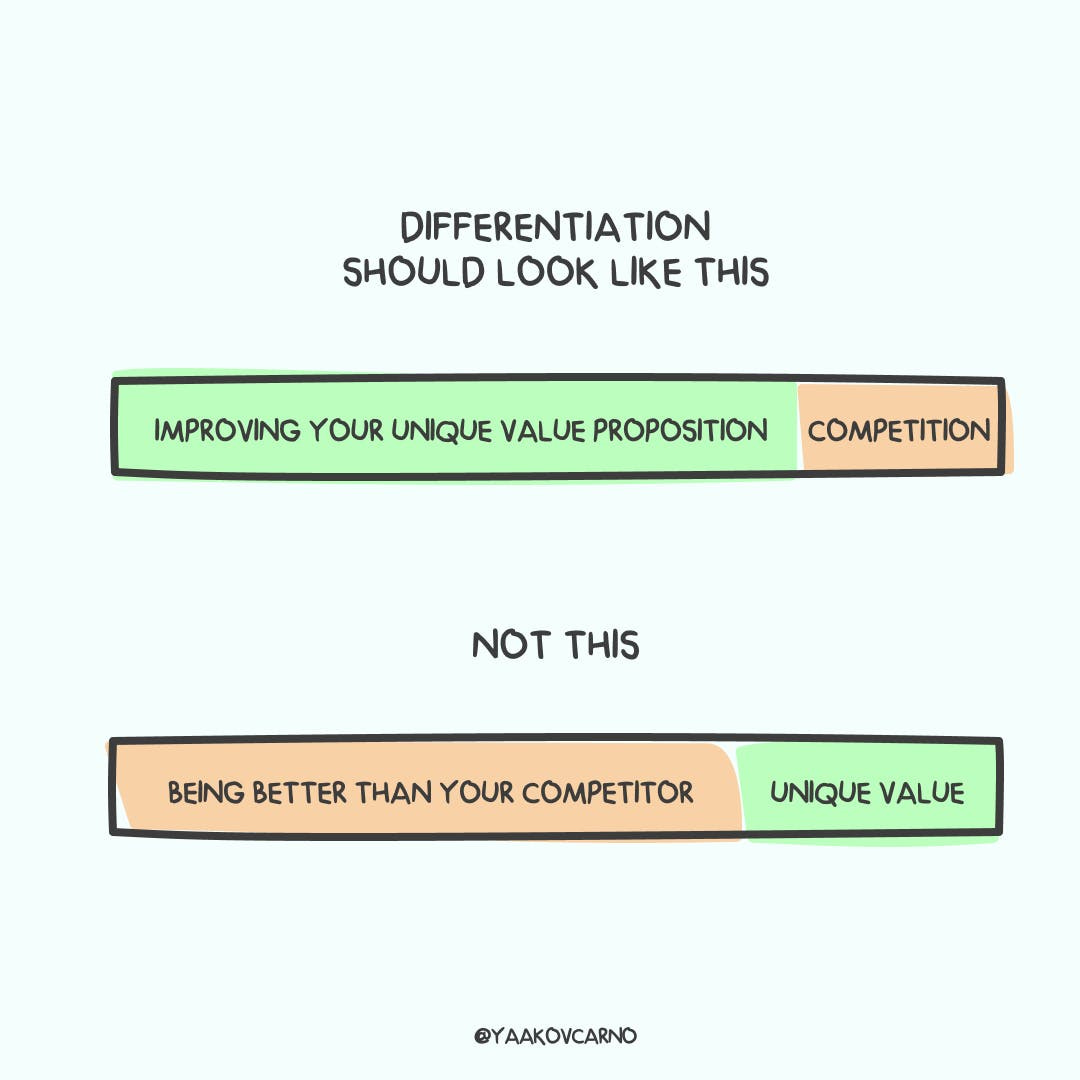How to overcome the biggest PLG misconceptions
Always put the user first. Focus on differentiation. Measure success by customer satisfaction and loyalty.
Today, we’re going to teach you how to overcome the biggest misconceptions about Product Led Growth.
We’re going to explain why PLG is:
Less about data, more about people.
Less about features, more about pain points.
Less about competition, more about differentiation.
Less about growth metrics, more about user experiences.
Less about marketing trends, more about user’s changing needs.
The main reason why companies struggle with PLG is because they don’t understand what it actually means to adopt a product led approach and mindset.
Unfortunately, many companies focus on short term wins without having their product led strategy clear and end up suffering major consequences in the long run.
But don’t worry, we’re here to help you overcome these misconceptions and build a powerful and predictable product led growth engine.
Here’s how, step by step👇
Step 1: Always put the user first
Putting the user first is the foundation of PLG.
Only by deepening your understanding of the people that are going to be using your product and their pain points, can you create a product that truly meets their needs.
First, you need to conduct in-depth customer research to understand what they need and how your product can solve it.
Next, you have to leverage this information as the backbone of your product’s development and prioritization.
This is an on-going process and you should continuously gather feedback, data and research to ensure that your product is in fact meeting their needs and desired outcomes.
It may seem obvious but it's very easy to get caught up in growth and revenue efforts and forget about the bigger goal - Building for the end-user.
The key to building a successful product led company is to always put the end-user value first.
Step 2: Focus on differentiation
Many companies mistakenly believe that PLG is about being the best in a particular market.
Instead, focus on differentiating yourself from the competition by focusing on what makes your product unique and valuable to your customers.
To differentiate yourself from the competition, you need to understand your unique value proposition and communicate it clearly to your customers.
Additionally, you should prioritize creating an unforgettable user experience that sets your product apart from the competition.
Step 3: Measure success by customer satisfaction and loyalty
A big misconception is that PLG is all about growth metrics such as monthly recurring revenue (MRR) and customer acquisition cost (CAC). While these metrics are important, they are not the sole focus of PLG.
Instead, PLG is about creating a positive user experience that drives customer satisfaction and loyalty, which in turn drives growth.
It’s super important to remember that growth isn’t revenue. They are distinct metrics, with different unique drivers that require different strategies and tactics.
Focusing exclusively on growth can lead to a product with high usage but low revenue, which isn’t sustainable. On the other hand, focusing solely on revenue will hurt growth and limit a company’s potential for future expansion.
Work on these two separately and you’ll develop a deeper understanding of the trade-offs so that you can make better decisions that drive both growth and financial success.
Measuring success by customer satisfaction and loyalty is the key to driving growth through PLG. By creating an unparalleled user experience, you will build champion users which in turn will fuel your growth.
In conclusion, PLG is about:
Solving customer pain points in a unique and effective way, not just having the most impressive features.
Deepening your understanding of how people adopt and buy software, not just prioritizing product usage data.
Differentiating yourself from the competition, not just being the best in a particular market.
Creating a positive user experience that drives customer satisfaction and loyalty, not just growth metrics.
Evolving to meet your users' changing needs, not just following the latest market trends.







